Ailefroide, Écrins, France
So you’ve done some single-pitch sport climbs and want to try longer, more adventurous routes? The big slabs on the lower reaches of the Ailefroide, a 4,000m peak in the Écrins region of the French Alps might be what you’re looking for. Predominantly bolt-protected and with straightforward access, there are dozens of moderate routes on these slabs, set in an idyllic Alpine valley, that provide a great introduction to multi-pitch climbing (routes normally longer than 50m climbed in different stages, or “pitches”). If you want to climb in Yosemite one day but don’t know where to try out multi-pitch climbing (Dawn Wall is a 32-pitch climb), this place could well be it. As with off-piste skiing, it is highly recommended that anyone new to multi-pitch climbing hires a guide: the Bureau des Guides in nearby Pelvoux will be able to arrange this.
Doubles at Chalet Hotel d’Ailferoide from €40pp a night B&B or €57 half-board
Portland, Dorset
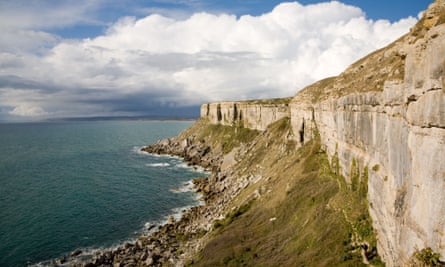
If you’re looking for somewhere to cut your teeth on the biggest “moderate” sport climbs in the country, the Isle of Portland is the place to go. The setting for Thomas Hardy’s The Well-Beloved also harbours over 4,000 bolted single-pitch routes (routes usually less than 50m in height that can be climbed in a single push from the ground to the top) on the same limestone that provided the raw material for many of London’s 18th- and 19th-century buildings. The climbing areas face east and west, so you can climb the east face in the morning with the sun overlooking Purbeck’s Jurassic Coast before moving to the wilder west coast of the isle, where the cliffs are higher and the very best routes are found. The best climbing guidebook to the area is Dorset (2012 edition) by Rockfax Guides.
Bunks at The Portland Bunkhouse, a basic hostel with climbers in mind, cost £17pp a night, including bedding
Llanberis Pass, Snowdonia
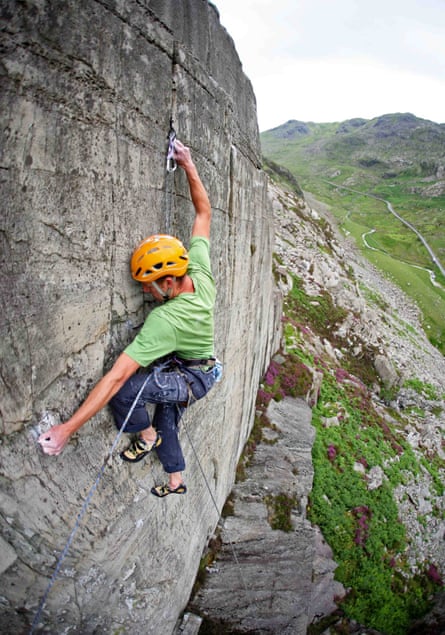
The Llanberis Pass, which winds along the northern flank of Snowdon, is Britain’s most historic rock-climbing area and has some of the most famous climbs in the UK, such as the laser-cut dihedral of Cenotaph Corner on Dinas Cromlech, and a wealth of easily accessible traditional climbs in the lower grades ideal for those making their first forays into outdoor climbing. The Plas y Brenin outdoor centre in nearby Capel Curig offers excellent introductory rock climbing courses with qualified instructors.
Five-day Rock Improver course at Plas y Brenin, for those who already have basic climbing skills, costs £650, including accommodation
Siurana, Catalonia, Spain
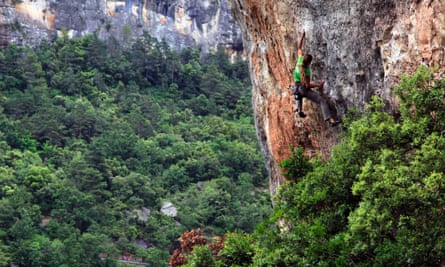
Catalonia is one of the world’s premier climbing areas, and home to the hardest sport climb (when permanent anchors, and possibly bolts, are fixed to the rock for protection) in the world. One of the region’s most historic, varied, and beautiful climbing spots is Siurana, a collection of honey-coloured crags and open ravines that cluster around the medieval hilltop village of the same name. Originally the village was known as La Seviriana, then Xibrana under Moorish control, before it was reconquered by the Christians in 1153. Overshadowed to the north by the higher cliffs of the dramatic Montsant massif, the area is ideal as a first overseas trip for climbers already familiar with indoor sport climbing.
Camping Siurana has a choice of camping or wooden cabins with basic amenities: tent pitches start at €7pp, dorms €12pp, doubles from €30
Fontainebleau, France
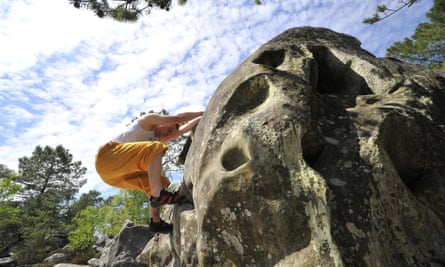
The concept of bouldering (climbing on boulders or low-level crags without ropes) as a separate genre of climbing was invented on the boulders of the Fontainebleau forest, just south of Paris, by a group of French climbers known as the “Bleausards” in the 1960s. One of them, Pierre Allain, pioneered the first version of the specialist climbing shoes used by all rock climbers today. The sandstone at Fontainebleau is exceptionally hard and smooth, and therefore the ultimate material on which to develop your technique, strength and finesse. Go there in spring or autumn, which provide the best climbing conditions, and discover why the Bleausards used to call this magical place “the laboratory of movement”.
Maisonbleau is a gite complex in extensive gardens in the forest, and makes an excellent base for a climbing trip. A two-bedroom gite for four starts at €320 for four nights; barn conversion for four from €350 a week
San Vito Lo Capo, Sicily
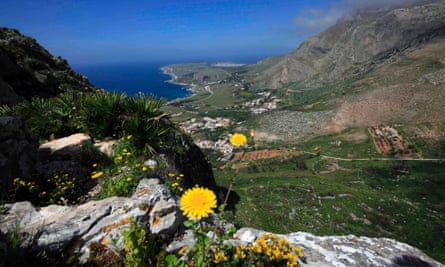
If you’ve got experience of climbing outdoors in Britain or elsewhere, the limestone cliffs around the peninsula of San Vito Lo Capo, the north-west tip of Sicily, should be high on your list of places to visit. With the castellated peak of Montegallo overlooking the deserted beaches of the Cofano Gulf, the setting for climbing around the peninsula couldn’t be more dramatic. You can spend your rest days swimming, hiking in the Zingaro nature reserve, or experiencing Sicilian cafe culture on the streets of San Vito itself, which feels more north African than Italian (it’s as close to Tunisia as the Italian mainland, after all).
El Bahira offers accommodation, from camping to apartments, close to the main climbing area. Camp pitches start at €5.70pp a night, apartments for four from €350 a week
West Penwith, Cornwall
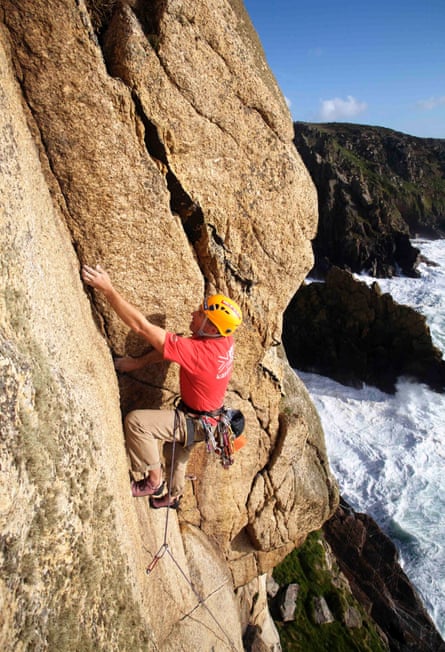
The granite cliffs that line the coast of West Penwith form a golden fringe around the south-west extremity of England. For anyone who loves Tate St Ives, fish and chips or just getting away from it all, this might be the country’s most appealing and romantic climbing area. Sennen, just south of Land’s End, is the place to cut your teeth, with a collection of superb single-pitch traditional routes in the lower grades, rising from a non-tidal platform that juts into the Atlantic like the deck of an aircraft carrier – take great care climbing here if the sea is rough. Mark Glaister’s guidebook West Country Climbs has all you need to know about the area.
Stay in Sennen Cove for the best sunsets, good pubs, and quick access to the crag. The Land’s End Hostel has beds for £25pp a night, as well as B&B accommodation from £75 a night
Västervik, Sweden
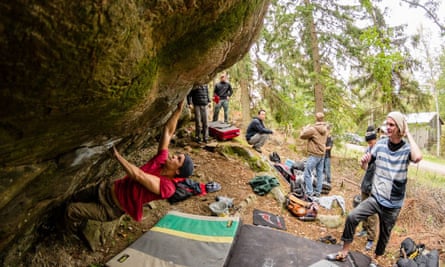
If you’re a keen boulderer, you might want to look further than Fontainebleau to get your fix. One of the most talked-about bouldering areas in Europe is Västervik, on Sweden’s Baltic coast. A four-hour drive south of Stockholm, it has a vast collection of granite boulders strewn across a landscape of coastal inlets, small islands, and dense forests. What’s more, you can combine a bouldering trip with a long weekend soaking up ultra-cool Stockholm; climbing doesn’t get much more glamorous than that. Västerviks Klättercenter offers climbing courses for beginner and intermediate climbers, and has all the info you’ll need on the area. A two-day sport climbing course costs £130.
Accommodation includes the Risebo recreation centre, near popular rocks for climbing, with camp pitches from £8 a night
David Pickford is editor-in-chief of Climb magazine

Comments (…)
Sign in or create your Guardian account to join the discussion